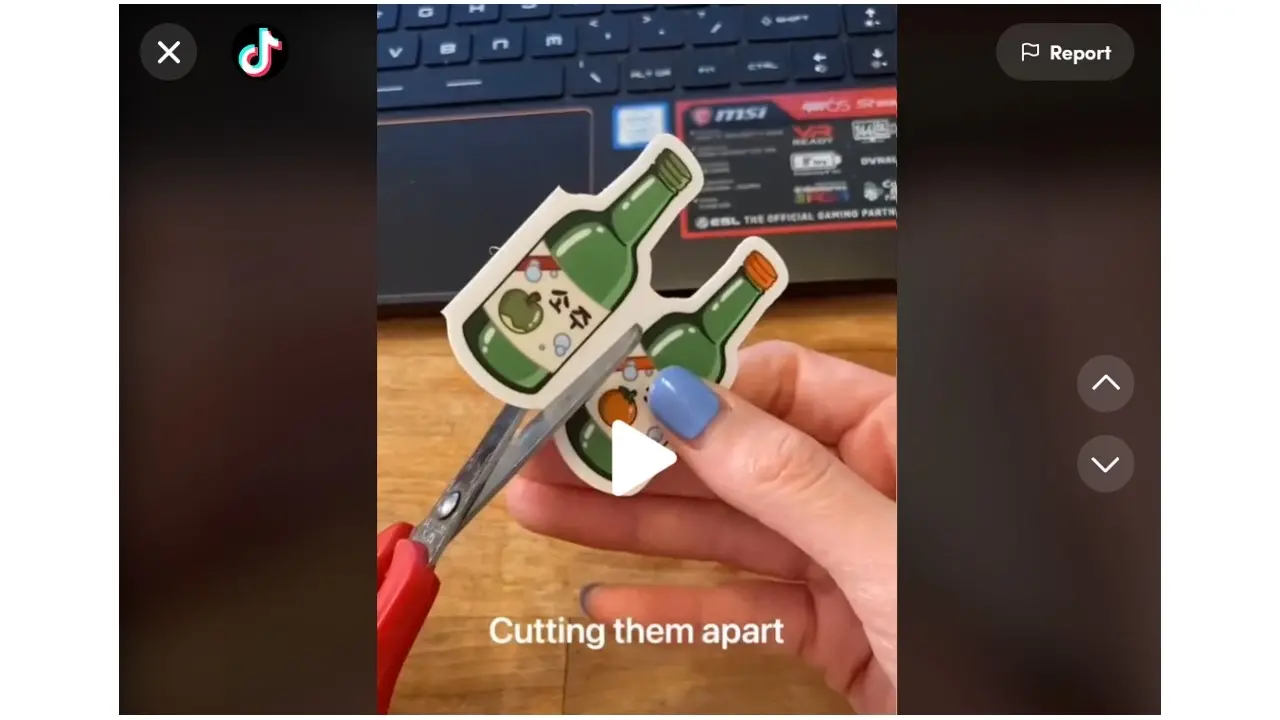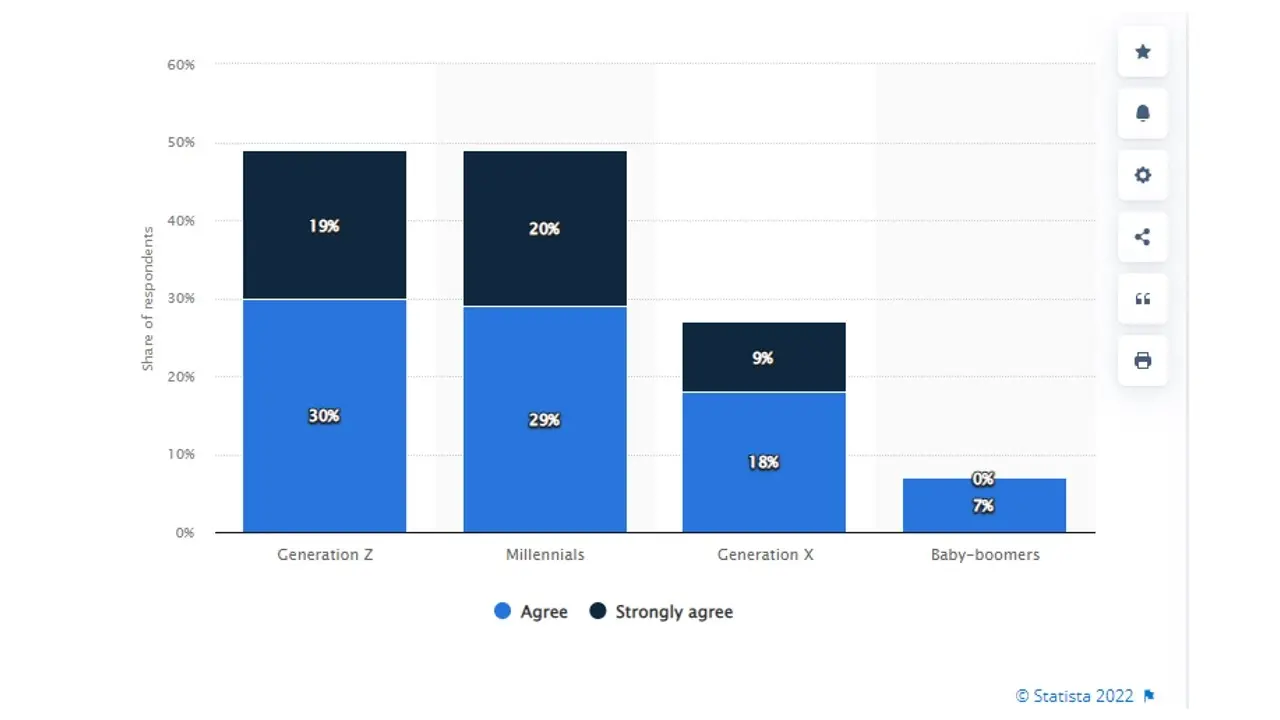If you are looking to increase your eCommerce sales using social media, you've come to the right place.
This article has effective tips to help you tap into a huge audience of social media users who are searching for products like the ones you sell.
In this article, we're going to examine different social media and social commerce platforms to see how you can integrate them with the other digital marketing channels, such as your blog, podcast, email, online courses, and various others.
Without further ado, let's dive right in so you can start building a successful eCommerce social media strategy that will get you the results you want.
Use TikTok To Reach Younger Generations
An effective social media strategy isn't about being everywhere at all times. It's more about choosing the right platform where your target audience hangs out and aligning your efforts with your eCommerce brand’s goals, whether it’s brand awareness, customer engagement, or sales.
So, for example, if your target audience is made up of younger audiences, then a platform like TikTok is perfect for reaching and engaging them. It comes with native eCommerce marketing and sales functionality that will help you set up and run successful campaigns to boost your conversions and get the best results from your social media marketing efforts.
One particularly effective way to leverage TikTok for your marketing is to make use of user-generated content (UGC) on the platform.
User-Generated Marketing on TikTok
This is an extremely effective strategy because people love short-form video content across all demographics. Encourage fans to create videos about your brand and its products, and then post these as part of your marketing strategy on this and other social media platforms.
Create a branded hashtag and ask your fans and followers to mention it whenever they talk about your business.
An example of a brand that does this effectively is Sticker Mule.

The company regularly reposts its customers’ pictures on social media as a way to engage users and increase brand awareness.
Use LinkedIn to Grow Your eCommerce Network
While TikTok is perfect for millennials and Gen-Z users, LinkedIn is most used by adults between the ages of 30 and 49 years. So LinkedIn is better suited to a target audience of, say, women with graduate-level education than it is for fashion-conscious 18-year-olds.
LinkedIn is also the perfect channel for professionals looking to grow their eCommerce network with guest post opportunities, link partners, affiliates, etc.
One of the platform's greatest strengths is its position as the go-to social network for professionals, which means if this is your target audience, you can leverage LinkedIn to find many lucrative growth opportunities for your eCommerce brand.
An effective way to do so is through content marketing.
Content Marketing on LinkedIn
LinkedIn is particularly well-suited for content marketing when compared to other social platforms. In addition to using the site to reach your target audience and expand your eCommerce network, you can also use it to promote and share your company culture, boost employee advocacy, and help with new recruitments.
Here are a few tips to keep in mind for your LinkedIn marketing strategy:
Create a personal LinkedIn profile for networking and set up a company page so other like-minded users can learn more about your eCommerce brand, products, employees, etc.
Post high-quality long-form content to attract your target readers on the platform and establish yourself as an authority in your field.
Reach out to people or brands of interest that you would like to partner with for guest posts and link opportunities.
Use Facebook for Its Integrated Commerce Functionality
Facebook allows you to create business pages so users can discover more about your eCommerce brand. The platform also comes with integrated functionality and a massive reach, all of which will help you expand your business in a cost-effective way.
According to recent studies, nearly half of millennial and Generation-Z shoppers use social media as a way to search for products.
The image below shows the share of global shoppers who think social platforms are a better place to find out about a new product than online search in 2021, by generation.

These younger generations find new products over search engines, with particular emphasis on Facebook and Instagram as their primary sources of information.
As an eCommerce business owner, you can use this to your advantage by creating a strategy for organic social media marketing on Facebook.
Facebook for Organic Social Media Marketing
On Facebook, you can post content that doesn't cost you any money to create or publish, but can bring in phenomenal returns on your investment of time and effort.
This type of organic marketing can be the bread and butter of your overall social media marketing strategy, as long as you can maintain engagement with your community, including conversing with them and responding to their questions.
The best part about this strategy is that you can include both brand-building content and sales activation content.
Use Pinterest to Boost Conversions and Sales
When it comes to eCommerce, image-based platforms like Pinterest are key to increasing your conversions and sales.
The majority of eCommerce sellers rely on these types of social platforms for brand awareness, customer engagement, and more. You too can use this search engine-like platform to put your products in front of users who love to shop.
All you need is to create visually appealing content as the basis of your successful Pinterest marketing strategy. The more you can stand out from other eCommerce brands in your niche, the easier it will be to convert customers on your site.
Create relevant boards, share your content, add Buyable Pins, and streamline your checkout process to make it easy for users to find what they need and make a purchase.
Thalita Ferraz from popular fashion and beauty website HerBones.com explains, “For our site and ecommerce brand, one of our best traffic acquisition channels has been Pinterest. Amazingly, we haven’t spent a dime on advertising in the platform but it still brings over 10,000+ pageviews to our site every single month”.
Pinterest for Social Media Paid Advertising
The social media marketing strategy we looked at previously involves generating organic traffic. But, on social media, it's always best to use a combination of organic and paid strategies if you want to see great results fast.
You can run Pinterest paid ad campaigns that allow you to reach 400 million people who use the platform each month and ensure that your products are discovered by your target customers.
If you’re unsure of how to go about creating and running a successful Pinterest campaign, consider hiring an experienced social media manager to take care of it for you.
Use Instagram to Generate More Revenue
Although owned by the same company, Facebook and Instagram work differently to connect you with your target audience. On Instagram, users are more concerned with discovering new products whereas on Facebook it's more about making connections.
While using a website builder helps generate engaging content, you need a place to share it. Facebook’s ability to share long-form text alongside images and videos makes it easy to strategically funnel followers to a blog article or landing page.
Instagram works a little differently. It allows you to highlight standalone content that may or may not be cross-shared on your site. While adding a linktr.ee to your bio with all links to your website and other social channels, it’s not as easy to embed links into Instagram posts as it is on Facebook.
But by creating different platforms with unique content, you are able to create a successful omnichannel marketing campaign that draws users to multiple platforms while cutting variable costs associated with other marketing channels.
Instead of just looking forward to what your brand has to offer next, they’re looking forward to what you’re posting on Instagram, Facebook, TikTok, your website, and so much more.
This might not sound like a big difference, but if you’re only providing your users the same content on all platforms, you’re going to just bore them to death.
However, By creating multiple avenues of engagement, you increase their overall engagement across platforms, build brand ambassadors from simple social followers, and increase brand recognizability even by those only faintly aware of who you are, what you do, and what your eCommerce store has to sell.
Furthermore, Instagram platform syncs with your Facebook shop which creates a seamless approach to showcasing your product on both your Facebook and Instagram profiles.
You can easily tag different products in your posts, Stories, or Reels to make it even easier for interested users to make a purchase.
These are all great tactics, but a particularly effective social media marketing strategy for Instagram is influencer marketing.
Instagram for Influencer Marketing
Working with influencers is a great way for eCommerce brands to boost awareness and generate more sales. This type of marketing has grown immensely in the past few years to become one of the most effective ways to market an eCommerce brand on social media.
At its core, this method is simply paid advertising in the form of endorsements from individuals (influencers) with strong followings or fan bases that brands want to reach.
So, instead of buying an ad, you simply pay an influencer to write a post or mention your products in a video with the hope of encouraging your target customers to make a purchase.
One of the reasons this strategy work so effectively is because it seems more authentic compared to traditional paid ads.
Use YouTube to Make Your Products More Discoverable
When used correctly, YouTube can be among the most lucrative platforms for running successful social media marketing strategies. Whether it's organic or paid, you can be sure of getting a great return on your investment.
Video consumption continues to grow and it's already being used by many eCommerce brands as a significant part of their strategy to market their products. It allows you to show your products in action, demonstrate various use cases, and create lifestyle content that helps to increase the desire and demand for your products.
With all these benefits, it's no surprise YouTube is considered by many to be the main platform that impacts consumer behavior.
And the best part is that as the second largest search engine (surpassed by only Google), YouTube can help your content be found by your target customers.
All you need to do is optimize your video content, including its keywords, titles, descriptions, etc. in order to improve discoverability and rank well.
Beyond YouTube: Using Online Course Platforms
However, while YouTube is a great tool for making products more discoverable, it does have limitations. Many eCommerce stores are turning toward online course platforms and Learning Management Systems (LMSes) to create educational content that expands the reach of their brand to new platforms and audiences.
These courses can be hosted on YouTube, but they lack the monetization features of leading online course platforms which allow creators to better build, monetize, and share online courses across a variety of social media channels.
For those on a time constraint, you can even purchase PLR courses and use them however you want. You can even create trailers and other short video content for YouTube that can help you leverage the reach of YouTube to generate passive income from your eCommerce courses.
Conclusion
We’ve come to the end of this article on social media strategies for eCommerce. I hope by now you're starting to see how having an effective strategy can help boost brand awareness, increase conversions, and generate more sales for your eCommerce business.
Keep in mind though to efficiently track your marketing spend and conversions so you don’t end up spending too much and know what exactly is working for your brand and its campaigns.
You can begin right now with the tips in this article and regardless of the platform you use, you'll be able to start seeing amazing results from your social media marketing campaigns.
Over to you. Which tip will you implement first to skyrocket your eCommerce social media sales? Share your thoughts below!
Frequently Asked Questions
How customizable is my ecommerce store?
This depends on the eCommerce tool you use. For example, Magento is 100% customizable, and you can amend just about every aspect. Shopify on the other hand has far fewer customization options.
Can WordPress be used for eCommerce?
WordPress offers many different ways to build an eCommerce online store for all types of products and markets. Almost 40 percent of all online shops are powered by WooCommerce, a WordPress eCommerce plugin.
Does my ecommerce store need to be PCI compliant?
Yes, if you’re going to be accepting payments via credit and debit card you’ll need to meet PCI regulations.
Is shared hosting good for eCommerce?
There are several advantages of using shared hosting for eCommerce, like its low cost, security, and user-friendliness. However, if you’re looking for a scalable hosting plan, managed cloud server might be a better choice for you.

Ron Stefanski is a website entrepreneur and marketing professor who has a passion for helping people create and market their own online business. You can learn more from him by visiting OneHourProfessor.com
View all posts by Ron Stefanski



















